Launched a product but unsure how users will find you? If you’re stuck behind competitors with stronger domains, bigger backlink profiles, and more visibility, you’re not alone. But there’s a long-term solution: organic growth through SEO for startups. It helps you build visibility without burning your budget on ads. And yes, it takes time, but the earlier you start, the sooner you’ll see compounding results.
Your site can attract relevant traffic even during your product testing or pre-launch phase. This SEO guide for startups explains how to start by building pages that target early-intent keywords, optimizing your structure, and laying the groundwork for authority.
- Build an SEO foundation even before launch
- Identify keyword clusters that match user intent
- SEO for startups is a long-term process, so results will start to show up after several months, but they’ll be steady and continue to grow.
- Track results closely: rankings, CTR, and organic traffic.
Reasons for a Startup Business to Invest in SEO

Starting SEO work before the full launch is a smart decision for a startup, allowing for gradual growth without the constant need to increase advertising costs. We’re not just talking about positions at Google. It’s also a way to gain visibility and authority, which later translates into stable results at a reasonable cost. This approach is especially valuable for those just starting out and unable to afford large budgets for experimentation.
That’s why search engine optimization is worth investing in from day one, while the product and positioning are still taking shape. Let’s go over the details!
Ads Fade. SEO Compounds
In the early stages, startups often pour their budgets into paid traffic because the results show up right away. And that makes sense: as long as the campaign is running, leads are coming in.
But there’s a catch that usually hits after a couple of months. Cost per click (CPC) keeps rising, more competitors join the auction, the budget starts burning faster, and the cost of customer acquisition (CAC) stops working out in your unit economics.
For example, let’s look at the CPC for competitive keywords in Google Ads. Digital marketing tool goes up to $44.60 for a top-of-page bid (high range). The best project management solution for small teams can reach $66.50. With a 10% conversion rate, that means the CAC would range from $446 to $665 per customer.
SEO for startups offers a different path. Organic traffic won’t bring instant results at the beginning, but that’s when you lay the foundation: build out your keyword strategy, create content clusters around real customer pain points, and slowly grow your domain authority. In the end, you get traffic that’s more stable and doesn’t disappear the moment you stop paying.
Moreover, by investing in SEO early, you build a lead generation channel that grows stronger over time instead of draining your budget every month.
Start Earning Trust Before You Scale
Google evaluates websites over time. The search algorithm looks at domain age, site structure depth, backlinks, and actual user behavior. If none of that exists yet, organic traffic won’t show up either. In practice, new sites often experience a six to twelve month delay in traffic growth simply because they lack history and authority.
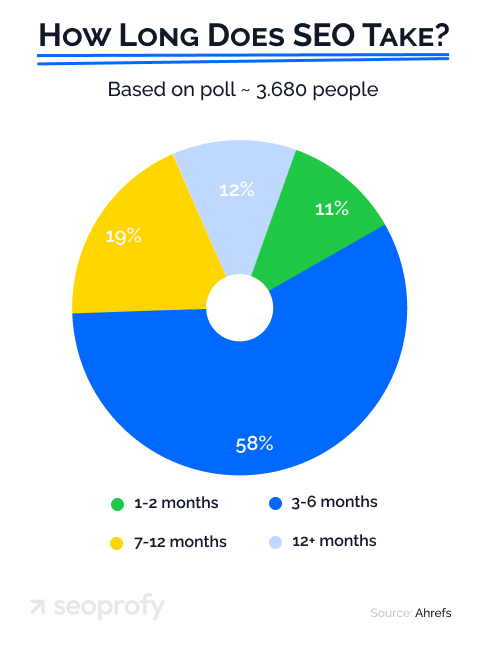
So, while you’re still in product–market fit mode, it’s worth launching at least a basic site structure, starting a blog, and laying the groundwork for future backlinks. This helps you move out of the low-trust phase faster and gives Google something real to analyze.
If your budget allows for multiple marketing channels, it makes sense to think about SEM from day one — combining paid search and optimization as a unified SEO strategy for startups. Ads help you test demand quickly and collect behavioral data.
However, by the time you need to cut back on advertisement spending, having at least some organic foundation in place helps you avoid a sudden drop in traffic and leads. That’s why SEO and SEM should run side by side.
Validate Through Search, Not Surveys
At an early stage, you don’t really know who your customers are or why they’d come to you. Surveys and focus groups only give you opinions, not actual behavior.
When you develop SEO strategy and build your keyword list early on, you see what people are searching for: how they describe their problems, what words they use, and how they compare solutions. That gives you a real entry point. Moreover, it’s faster and cheaper than building a landing page, running ads, and pretending that’s validation.
Say you’re building a fintech product for freelancers. You assume the main pain point is “flexible invoicing.” But not many people are searching for that. Instead, they’re typing “commercial invoice for customs.” So, your product might be useful, but it’s not speaking the user’s language. SEO for startups helps you catch that before launch, not after.
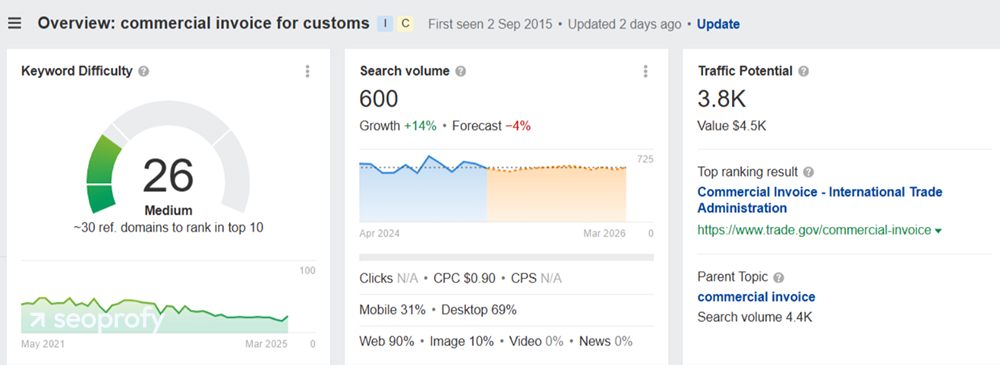
Or maybe you’re working on a sales automation tool. Inside your team, people throw around phrases like “automated outreach AI”. But users are Googling “automated LinkedIn outreach” way more often. That’s a different angle, a different message, and a different kind of content you’ll need to create.
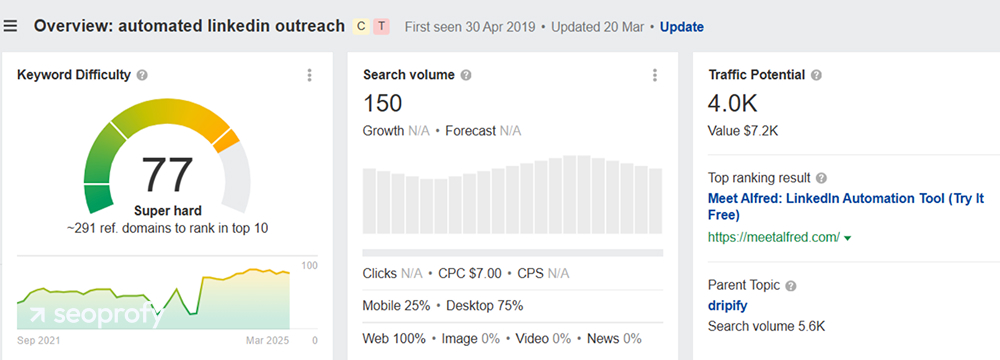
Look Fundable in Search
The first thing investors, journalists, or potential customers do when they hear about a startup? They Google it. If the search results are empty, messy, or unclear, it sends one obvious message: this business doesn’t really exist.
SEO solves that not with fancy pitch phrases but with structure: clear naming, well-written headings, dedicated pages for key queries, logical URLs, and smart internal linking. All of this creates the impression of a real, organized project.
Say you’re building a devtool for engineering teams. Without SEO, you’re stuck with a basic landing page like “AI code assistant” and maybe one product page. With SEO for startups, the whole thing levels up: you can build documentation in subdirectories (like /docs/), create specialized integration pages such as “AI pair programming for VS Code” or “GitHub Copilot vs [your brand],” and target specific queries like “how to write cleaner code faster” or “code review automation SaaS” to attract low-competition traffic with strong user intent.
SEO shows that you know who you’re talking to and why. And for a startup, it’s the simplest way to look like a mature, product-focused company, even if the team is small and you’re still in pre-release.
6 Directions to Work on Startup SEO
SEO is a system built on several interconnected parts that strengthen each other. If you ignore even one of them, the rest start to fall short. Below are five areas every startup website needs to cover to have a real shot at consistent growth.

1. On-Page SEO
The point of on-page SEO is to properly prepare your website’s pages for specific search queries. Google doesn’t judge a site by its overall look or design. The algorithm evaluates how well a specific page matches the user’s query and how easy it is to engage with the content. So, on-page SEO includes:
- A single clear H1 that matches the query or intent
- H2 and H3 subheadings that break the content into logical sections
- A short, descriptive URL with natural keyword usage, free of parameters and unnecessary folders
- A title tag and meta description that clearly explain what the page is about and help improve CTR
- Internal links connect pages and help Google understand the site as a whole.
The pages also need to include high-quality, SEO-optimized content. That means writing a copy that answers real questions, is easy to read, and follows a clear structure. Good SEO content for startups, combined with a solid page layout, improves user experience, keeps visitors on your site longer, and helps your search engine rankings grow.
2. Off-Page SEO
Off-page SEO covers everything that builds your site’s reputation outside of its own pages. Most importantly, that means backlinks, but it also includes media mentions, partnerships, and guest posts.
Being in Google’s top 10 isn’t random — 96% of those pages have built over 1,000 links from unique domains. Backlinks help your site earn credibility in the eyes of search engines. Without that, it’s hard for a site to compete in search results. This is especially true for new businesses with no history, no backlink profile, and no mentions online.
Trying to inflate your backlink profile artificially is mostly a waste of time. The algorithm can tell the difference between real mentions and paid placements. But when a relevant site links to a page that genuinely solves a problem, that has an impact both on rankings and on traffic. We’ll cover realistic SEO practices for startups to earn quality backlinks later in the article.
3. Technical SEO
Technical SEO for startups makes sure your site can actually appear in search results. It’s the foundation: how fast your pages load, what gets indexed, what signals are being sent to Google, and how the algorithm reads them.
Startups often run into trouble here. Sites are usually built fast, sometimes on custom CMS platforms, with no real attention to SEO requirements. The sitemap gets overlooked, robots.txt is left with default settings, canonical tags are duplicated, filters stay open, and there’s no logical connection between pages. It might look fine on the surface, but the index ends up a mess. Google wastes crawl budget on secondary pages while the important ones get left out.
That’s why you need to set up technical processes from day one. Run regular crawls, make sure the right pages are getting indexed, monitor status codes, and manually check your sitemap and indexing settings.
4. Content Marketing
Content marketing in SEO means creating pages that solve real user problems and answer real questions. It’s not limited to articles and includes all types of content people look for through search: comparisons, checklists, troubleshooting posts, and product pages. The work is built around demand.
Content is one of the best ways to grow reach without increasing your costs. It helps you target long-tail queries, show up across the SEO funnel, and build trust in your product. This is especially important for a startup, where the brand isn’t widely recognized yet and organic traffic has to be built from scratch. The more relevant topics you cover based on search demand and your product’s niche, the broader and more sustainable your organic reach.
5. SEO Tracking and Performance Analysis
Tracking startup SEO results means collecting and analyzing data to understand what’s working and what isn’t. This includes gathering insights on traffic, rankings, indexing, clicks, impressions, engagement, and other key metrics.
For startups, this step is non-negotiable. When resources are tight, tools like Google Search Console, GA4, and SEO platforms such as Ahrefs or Semrush help you identify exactly what’s working. This part of the system allows you to spot real growth opportunities, set clear priorities, and avoid random decisions.
6. Local & Global SEO
Local SEO is the process of optimizing a website for search queries connected to a specific region. It includes working with geo-targeted relevant keywords, local pages, map listings, business directories, and elements that matter to users searching for a product or service in a certain city or country.
International startup SEO solves a different task. It’s focused on making a site visible across different countries and language markets. This includes building the right site architecture for multiple regions using subdomains or subfolders, setting up hreflang, localizing content, and accounting for behavioral and language differences between regions.
Both areas define where your site shows up and who sees it. If your site isn’t technically and content-wise adapted to the geographic context, it will lose to local competitors even if the product itself is stronger.
How to Do Startup SEO: 11 Steps
Now that it’s clear what SEO consists of and why each part matters, it’s time to move on to the practical side. Below is a startup SEO checklist you can use to start working on a website.
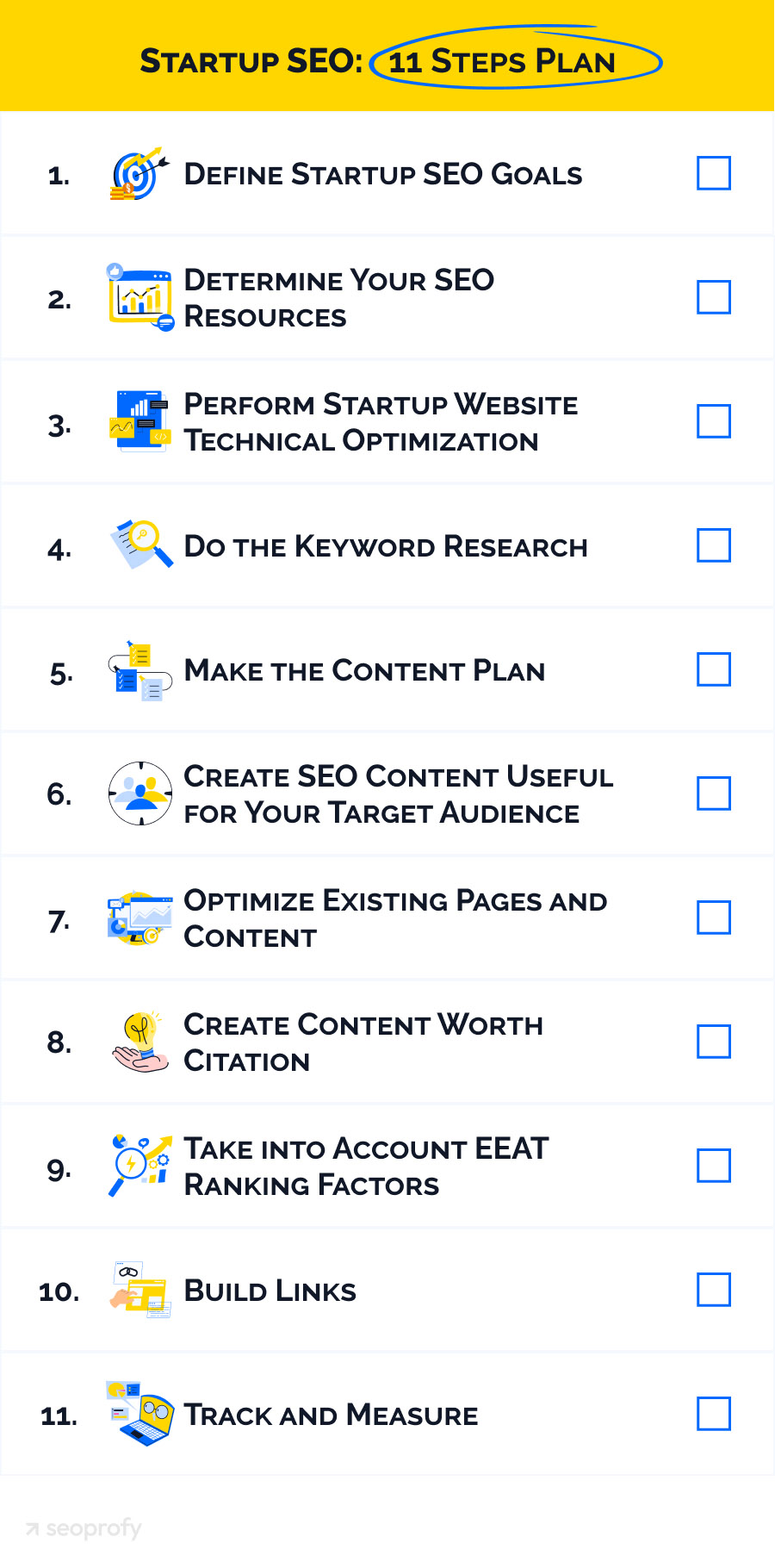
1. Define Startup SEO Goals
Without clear goals, SEO turns into chaos. That’s why, at the very beginning, you need to define why a search optimization campaign is being launched and what exactly needs to change for the effort to count as successful.
SEO goals are usually grouped into traffic, branded queries, visibility, backlinks, content, and technical performance. Here are examples of solid SEO goals at the startup stage:
- Organic traffic: Reach 10K monthly unique visitors from non-branded queries within 6 months.
- Branded search growth: Increase branded impressions in GSC by 25–30% in one quarter to build brand awareness and authority.
- Keyword rankings: Secure stable top 10 positions in Google for a list of 15–20 commercial keywords selected based on search volume, relevance, and conversion potential.
- Link building: Earn at least 30 high-quality, niche-relevant backlinks per quarter (DR >30; real traffic, no spammy or paid link sources).
- Content and structure: Create and publish 30–40 new pages based on clusters with confirmed search demand (according to Ahrefs or Semrush).
- Technical optimization: Achieve page load times under 1.5 seconds (Core Web Vitals in the green), fix all 404 and 500 errors, and deindex junk pages and technical duplicates.
Goals should be set based on your current baseline after auditing visibility, backlink profile, and key competitors. Without this data, it’s not a real objective and can’t be used for measuring SEO progress.
2. Identify Your Resources for SEO
Search optimization is a set of processes, each of which takes time and expertise. That’s why SEO pricing includes several components: specialist work, content and link costs, and technical support for a startup website.
SEO Specialist Salary
According to Glassdoor data, an in-house SEO specialist earns between $54,000 and $97,000 per year, with a median of around $72,000. Monthly, that translates to about $4,500 to $8,000. But of course, on top of a salary, a specialist also needs access to the best SEO tools and coverage for extra costs like sick leave, bonuses, and other benefits.

Link Building
This task usually requires a separate person focused on outreach and building relationships with bloggers, niche site owners, and media editors. In the US, this kind of specialist typically earns between $3,500 and $5,500 per month, depending on experience.
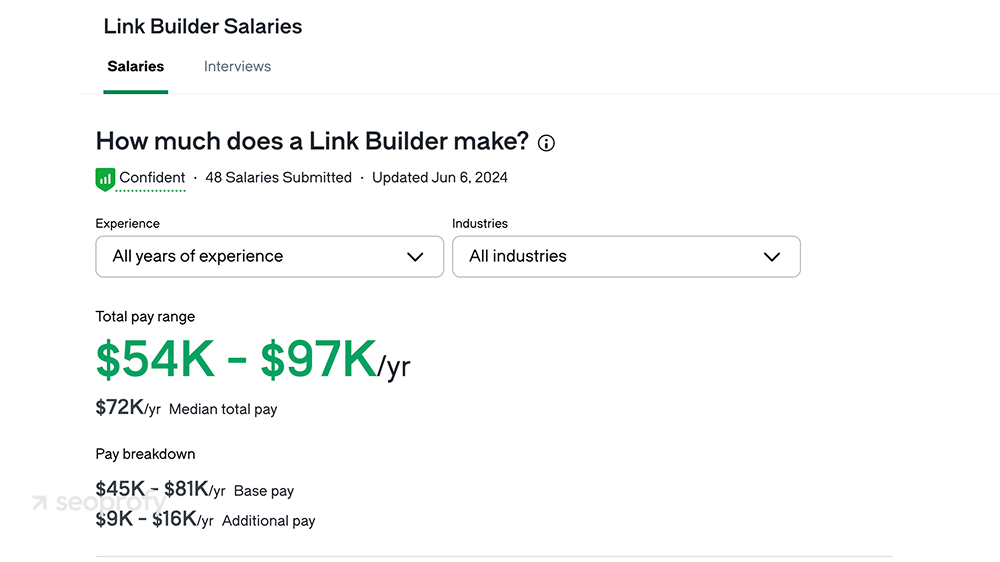
On average, they build around 14 high-quality links per month. However, experienced specialists will be able to bring in more. In one of our SEO case studies, we shared how we managed to acquire 95.9K backlinks while working on a project since 2021.
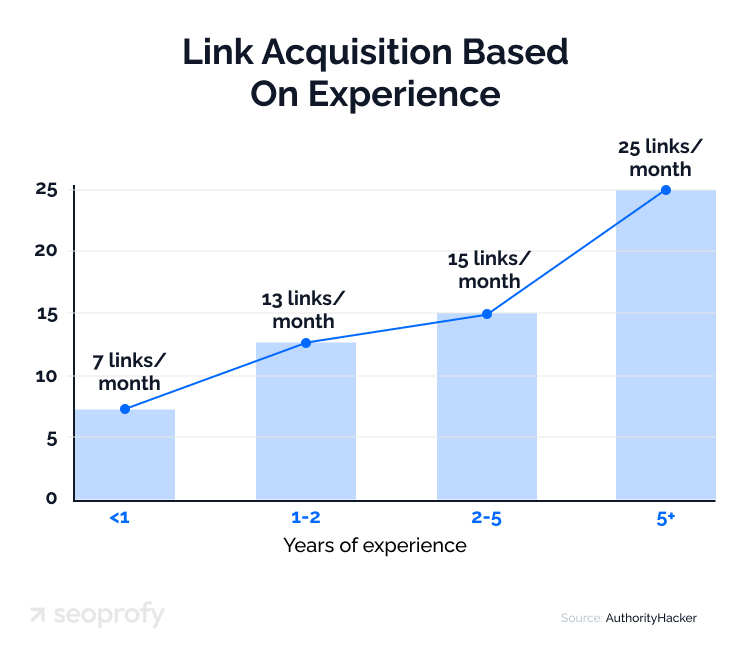
Content (Writers and Editors)
A well-written expert-level article, including editing and formatting, costs about $100 to $300. A startup needs at least 5 to 10 new articles per month to see real growth. That adds up to $500 to $3,000 monthly just for content.
Technical SEO and Development
Ongoing technical audits, error fixes, and implementing SEO updates require at least $500 to $2,000 per month if you bring in a part-time developer.
So, for an in-house team working on one startup project, the total monthly cost can easily hit $6,000 to $15,000. That’s why it’s important to decide early whether you want to build a full team internally or partner with professional SEO services.
Agencies typically charge between $50 and $200 per hour. Most startups and small businesses spend around $1,500 to $3,500 per month with an agency and get a ready-made team with experience growing early-stage websites.
Moreover, such companies usually offer a pay for performance SEO model, and a startup doesn’t end up covering every failed experiment or bad call. So, for a single project, working with professionals is usually both more affordable and effective.
You’re building the product. We’ll build your visibility. SeoProfy helps startups get indexed, ranked, and visible — even before launch. Here’s what we do:
- Build ranking-ready structure
- Create search-optimized pages
- Earn relevant backlinks
- Track performance clearly

3. Perform Startup Website Technical Optimization
Technical optimization is the preparation of your site. This is necessary for search engines to crawl and rank it efficiently.
Start by running a full crawl of the site using Screaming Frog or Sitebulb to map all pages, redirects, duplicates, and errors. The first priority is to fix basic status code issues like 404, 500, and redirect chains. Then make sure that pages important to the business are not accidentally blocked from indexing through canonical tags, noindex, or the robots.txt file.
Also, check the crawl budget. This is especially important for startups since new sites usually get limited crawl resources from Google. You’ll need to block technical pages from indexing, such as filters, sorting parameters, search results, and login pages.
One of the most useful startup SEO tips is to always keep the page depth under three levels. This speeds up crawling and helps distribute internal link equity more effectively. Next, move on to improving load speed and Core Web Vitals:
- Largest Contentful Paint (LCP): under 2.5 seconds
- Interaction to Next Paint (INP): under 200 ms
- Cumulative Layout Shift (CLS): under 0.1
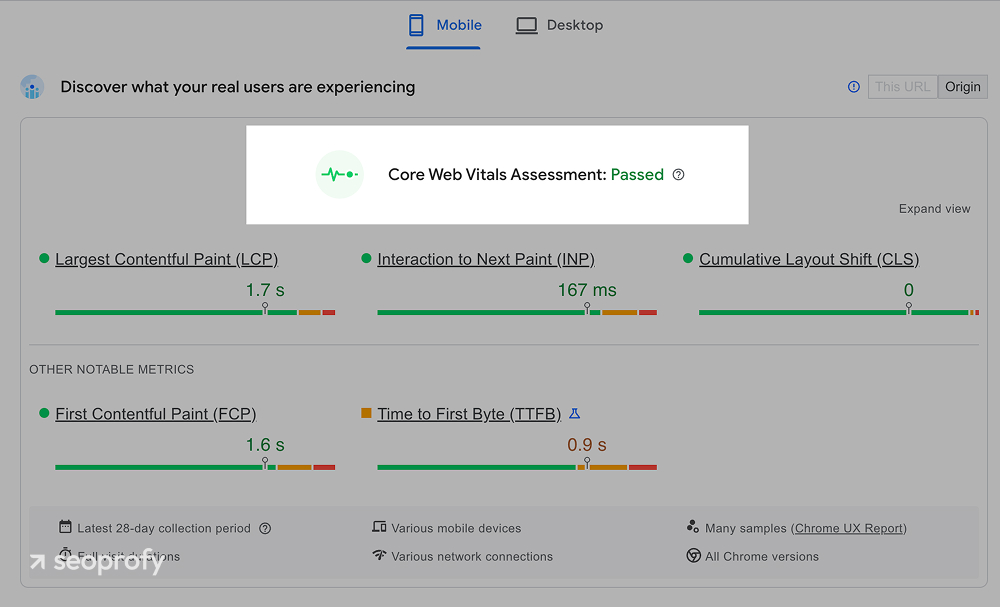
Use Google PageSpeed Insights and Chrome DevTools to diagnose issues. Give your developers clear and specific tasks: image optimization, CSS and JS minimization, caching setup, and using a CDN.
The final step is validating the sitemap.xml file and schema.org markup. This helps Google interpret your content and display it in rich snippets. For schema, you can use a free validator. For example, we created sample markup for a hypothetical page and got the following test results:
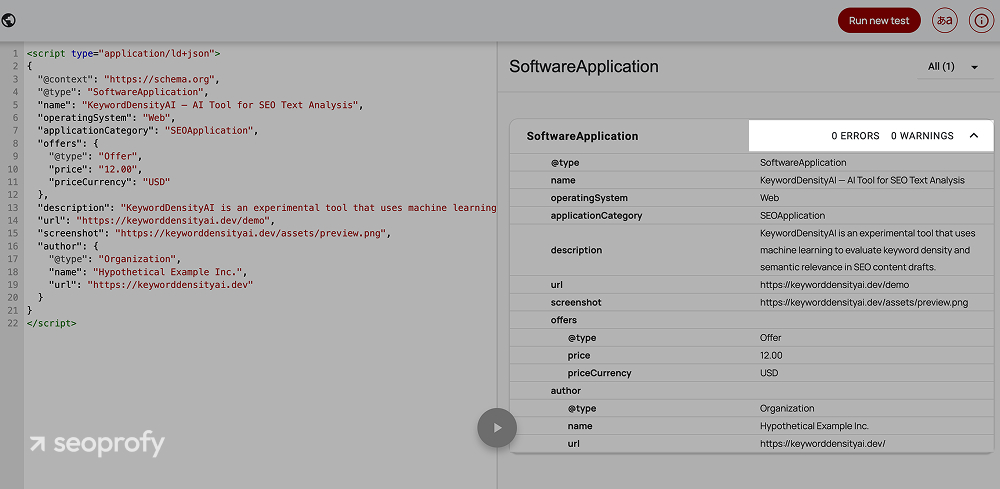
4. Do the Keyword Research
Keywords are the foundation for how your entire site is structured. Without keyword research, you won’t know what pages you need, what topics your audience is actually searching for, or how much content you need to meet that demand.
The first step is analyzing competitors. In Ahrefs, open Site Explorer, enter the domain of a close competitor, and go to the Top Pages section. This shows which of their pages bring in traffic and which target keywords are driving it. If your startup is new and direct competitors are limited, look at indirect competitors (companies targeting the same audience with a different product).
Let’s say you’re launching an online tool for small businesses that helps track, approve, and autofill standard documents. One of the top-ranking competitors is docuware.com:

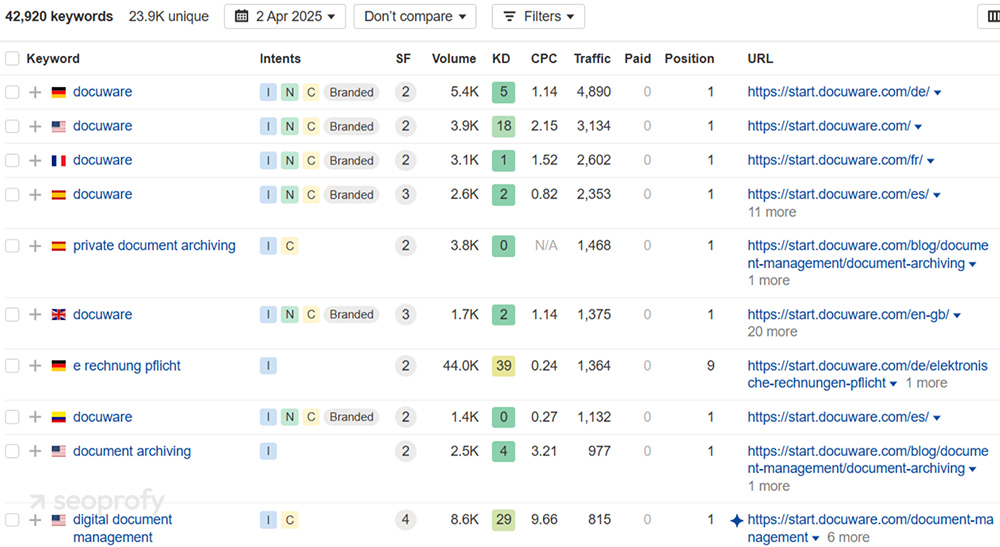
Next, go to the Content Gap section. It highlights topics that already bring traffic to your market but aren’t yet covered on your site. This is a great way to uncover clusters you’ve missed:

You’ll also see what types of queries dominate. This matters because your site structure needs to reflect intent. Ahrefs helps with this by color-coding the search intent types: yellow for informational, green for commercial, blue for transactional, and orange for navigational.

After that, move on to Keywords Explorer. Start by entering core terms related to your product and build a list of additional keywords. Make sure to pay attention to the following:
- Search volume helps you avoid wasting time on topics no one is searching for. It shows the average number of monthly searches for a keyword and gives a rough sense of demand.
- Traffic potential shows the total traffic a page could get if it ranks for the entire cluster of related keywords. This is more important than the volume of a single keyword, since most pages attract traffic from a group of similar queries, not just one.
- Keyword difficulty (KD) tells you how realistic it is to rank early on. It measures link-based competition. For example, a keyword like online workflow tool or document automation tool might drive more traffic, but breaking into the top of search engine results pages is hard. However, if you check the matching terms, you’ll usually find lower-competition keywords worth targeting.
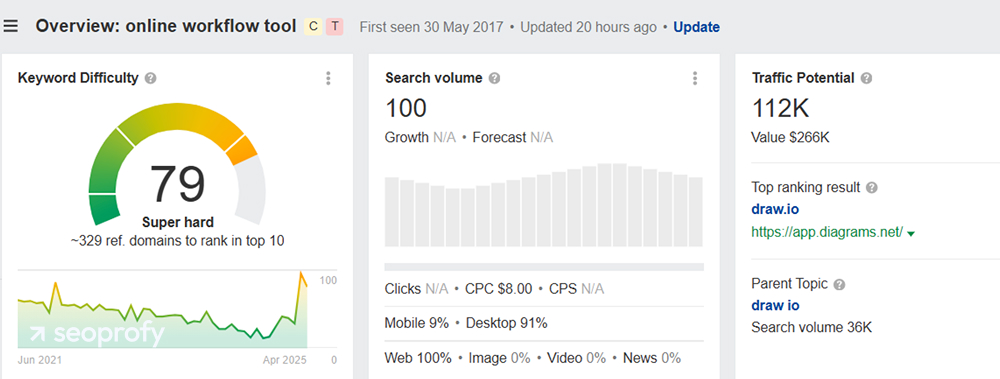
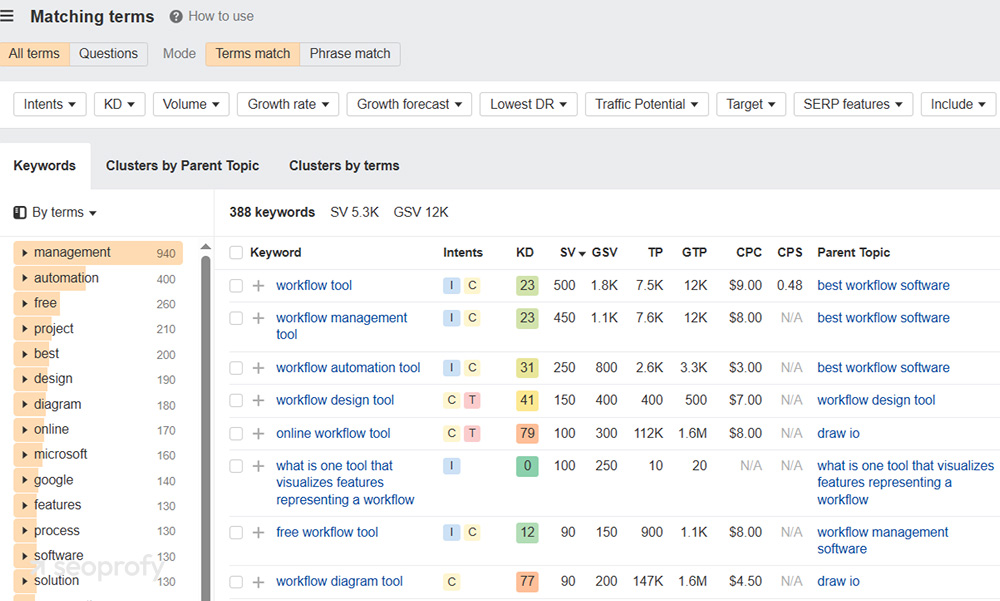
- The parent topics help avoid creating separate pages for every long-tail query. Instead, you group related keywords into clusters, which makes your structure cleaner and avoids cannibalization.
You can also use Semrush, which is great for spotting transactional keywords, or tools like AnswerThePublic and AlsoAsked to see how users phrase real questions. If your site is already live, don’t forget Google Search Console. It will show the actual queries your site is appearing for.
5. Make the Content Plan
A content plan is the structure of a future website based on search demand. It helps define which pages will bring in organic traffic, how they connect to each other, and in what order they should be launched.
Each row in the plan is a cluster of queries grouped by meaning.. It reflects a single search task phrased in different ways. For example, best project management software, tools for project planning, and software to manage team tasks are one cluster. One page can cover all of them. This is how it’s structured on the Website Planet site:

Each cluster includes an intent. This determines the type of page. Informational queries need an article. Commercial ones call for a category page, landing page, or product overview.
The content plan helps you set the right priorities within your SEO campaign. Pages with quicker potential go live first, followed by more competitive ones.
6. Create SEO Content Useful for Your Target Audience
Content needs to match user intent and follow the format that search engines recognize as the best fit for the topic. To make this kind of content possible, you need a detailed brief. It’s prepared by the SEO specialist based on keyword research and competitor analysis.
A brief is more than just a list of keywords. It includes the page type, intent, primary queries, structure, examples of similar pages, depth requirements, and content blocks. It also includes links to competitors so the writer can see what material already exists and create something better. After the draft is written, it goes through an initial review:
- Keyword density check using tools like Surfer SEO or NeuronWriter
- Plagiarism check through Content Detector or Copyscape
- AI content scan with Originality.ai or Writer.com’s detector.
Next, an editor checks whether the intent is fully covered, whether the content is over-optimized, and whether there are duplicate ideas or filler fragments. Anything that doesn’t move the page toward its goal gets deleted or rewritten.
Sо, strong SEO-optimized content is accurate, well-structured, and tied to real search demand. It reflects the user’s intent, passes all quality checks, and avoids keyword stuffing.
7. Optimize Existing Pages and Content
One of the most effective SEO strategies for startups is optimizing existing pages. Over time, underperforming pages are often easier to fix than to build an entirely new structure and target a new cluster from scratch. It’s faster, cheaper, and carries less risk.
The first step is analysis. Use Google Search Console to collect data on which pages have lost impressions, which ones are seeing fewer clicks, and where CTR is going up or down.
Second, look at rankings. If a page sits between positions 11 and 15, it has potential. If a page ranks below position 30, check the keyword targeting, review how well the topic is covered, and consider rewriting the content.
After that, run a competitor comparison. Check the structure, length, supporting blocks, and additional keywords, bringing them traffic. Use that to improve your structure. At the same time, check technical factors. Make sure meta tags are still in place, canonical tags aren’t blocking indexing, and site speed hasn’t declined.
Once the content is updated, request reindexing in Google Search Console. Track the results: positions, CTR, and user behavior. If there’s no movement after two to three weeks, revisit the structure and figure out what didn’t work. Results come from iteration.
8. Create Content Worth Citation
Content can serve different purposes. Some pages are built to bring organic traffic growth for startups. Others are designed to match search intent and support conversions. Then, there’s a special type of content made specifically to attract backlinks using white hat SEO methods.
People naturally link to content that helps them. Something that’s easy to drop into a blog post, a guide, or a resource list.
Take Backlinko’s study on Google ranking factors. It’s been cited thousands of times because there’s nothing as comprehensive on this topic:

But research isn’t the only option. The most linkable pages also include:
- Up-to-date statistics
- Structured guides with charts, frameworks, or tables
- Calculators, tools, or templates
- Glossaries or explainers that can be quoted.
Startups have one big hurdle: most authors would rather not link to a brand no one knows. They seek trustworthy sources with a reputation. The solution to this is to produce unique content that can stand alone. If the research is difficult to replicate and brings real value, the links will come.
9. Take into Account E-E-A-T Ranking Factors
E-E-A-T stands for Experience, Expertise, Authoritativeness, and Trustworthiness. These are evaluation signals Google uses to decide whether a site is reliable. They matter most in areas where mistakes come at a high cost: finance, health, security, legal content, or SaaS tools with mission-critical features.
Startups usually don’t have a strong domain yet, so every trust signal has to be built from scratch. Here’s how:
Experience
Add real case studies, quotes, screenshots, and data. On product pages, include usage examples. In blog posts, refer to real scenarios. In your team bios, include professional backgrounds. You can also reinforce this technically by tagging authors with schema.org/Person instead of publishing content anonymously.
Expertise
Every piece should have a clear byline (with a name, photo, and short professional bio). If your niche is sensitive (finance, health, legal, or SaaS with legal implications), include credentials, relevant projects, and experience. On the backend, use schema.org/Author.
Authoritativeness
SEO for startup authoritativeness is an essential part of the strategy from the very beginning. You’ll need to build at least a basic level of social proof: reviews, client logos, and media mentions. External links, citations, partnerships, and being referenced in other articles all help strengthen your credibility. Make sure your homepage includes an “About Us” section with real people and recognizable brands.
Trustworthiness
If a user can’t tell who you are or how to reach you, Google won’t either. Make sure your site includes:
- A clear footer with contact info, privacy policy, and terms of service
- A valid SSL certificate
- Working pages with no 404s along key navigation paths
- Real names and faces in the About Us section
- An identifiable business (including email, address, or legal entity, if relevant)
10. Build Links
Early on, it’s important to focus on link formats that are actually within reach, even if you don’t have a well-known brand or a huge budget. One of the most reliable options is getting featured in listicles, alternative pages, and comparison posts. You can do this through guest posting, partner contributions, or direct outreach to the authors of those pieces.
Another common link source is startup directories like Product Hunt, BetaList, or Startup Stash. If you’re launching something new, these platforms can give you more than just a backlink. They often bring your first mentions and some early visibility. Review platforms like G2 or Capterra are also worth using, especially if you’re in SaaS.
Track your backlinks using Ahrefs or other link index tools. Check for new referring domains, see which pages are linking to you, and see what anchor text they’re using. What matters is not just the number of links but whether the linked pages are gaining traffic and improving rankings.
11. Track and Measure
SEO for startups should be evaluated based on specific metrics: traffic, rankings, visibility, and backlinks. The first place to look is Google Search Console and Google Analytics:
- Impressions: If they’re increasing, the page is showing up for more queries
- Clicks: show actual traffic from search
- Average position: Helps track movement within the cluster
- CTR: If the page ranks well but CTR is low, check how the snippet looks in search: title, description, and content format
To get a broader view, connect Ahrefs or a similar tool. These show how organic traffic is trending, whether new keywords are appearing, and whether more domains are linking to you. If a cluster starts losing rankings, someone likely captured the intent better. If new keywords show up, your coverage is expanding.
Measuring performance isn’t limited to metrics alone. As part of cost-effective SEO for startups, you also need to assess whether the effort is yielding results. SEO ROI is calculated using this formula:
(Revenue from organic search — SEO costs) ÷ SEO costs
It’s simple math, but it requires tracking where leads come from and reviewing results quarterly. That’s the only way to know whether you’re just growing or growing profitably.
Summary
SEO is a good investment for any startup, especially in its early stages. While it may seem daunting for a beginner, the long-term benefits it offers in terms of business growth are undeniable. So, the importance of SEO for startups cannot be overstated.
To get started, take note of these SEO tips for startups, from optimizing your site’s structure to building high-quality content that addresses real user pain points. If you’re unsure about handling SEO internally, an outsourced SEO team could be the solution, allowing you to focus on scaling while the experts handle your SEO needs. At SeoProfy, we can help you build and execute a strategy that drives results.













